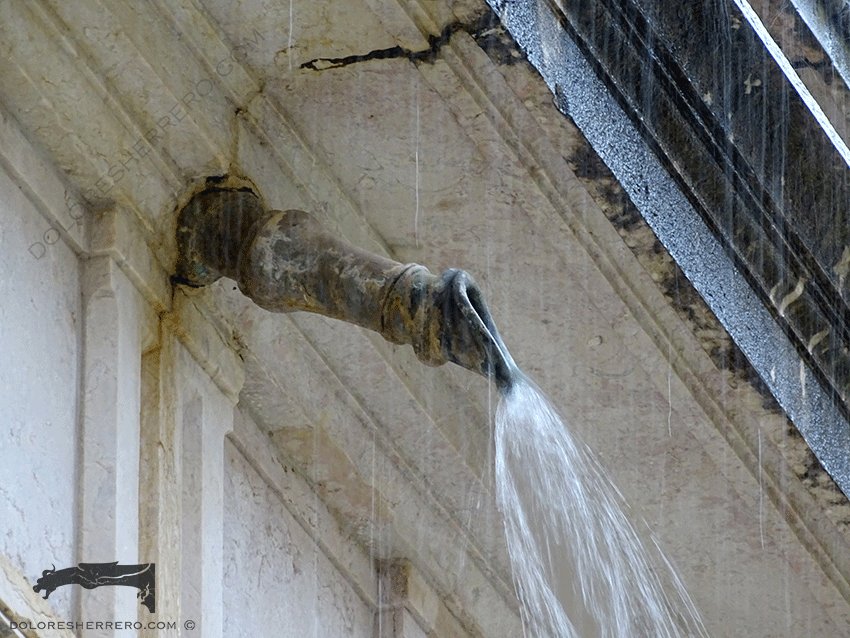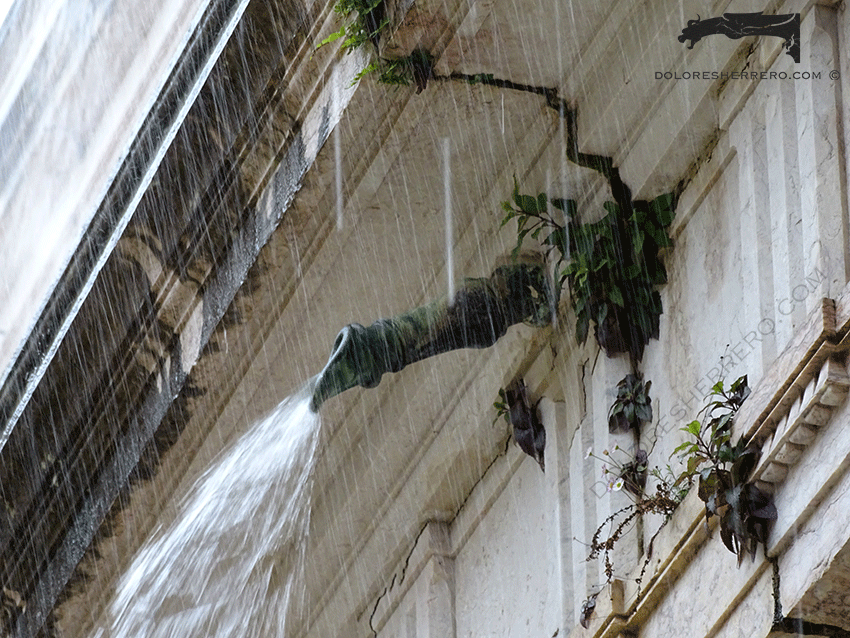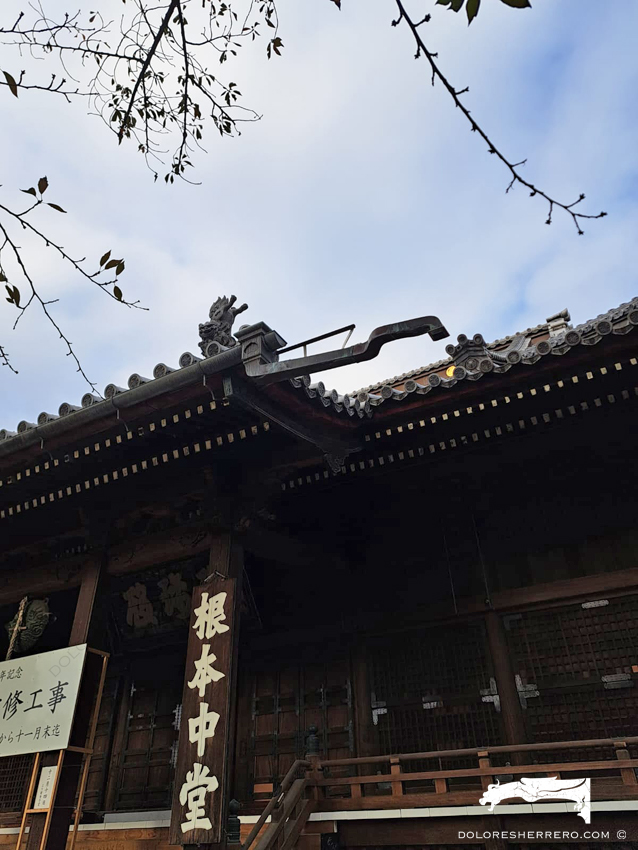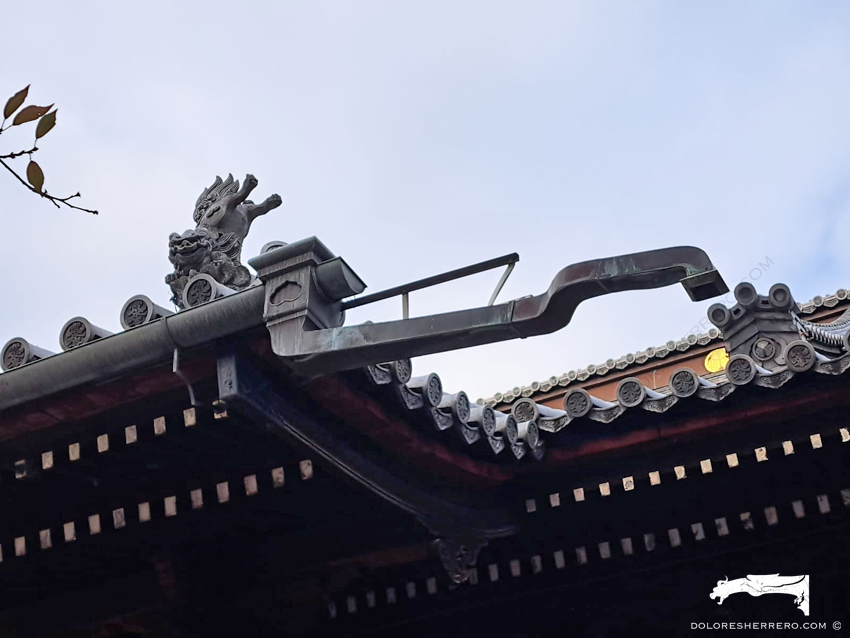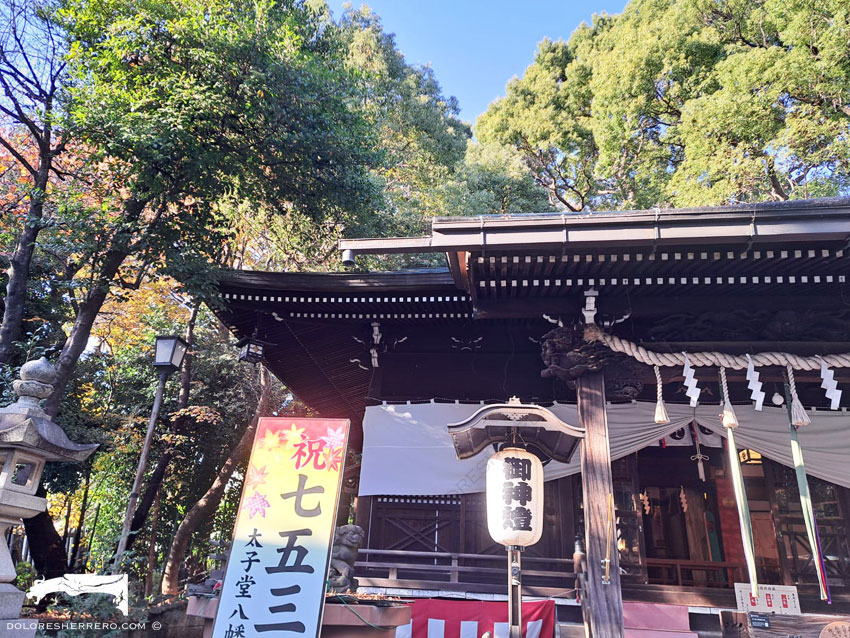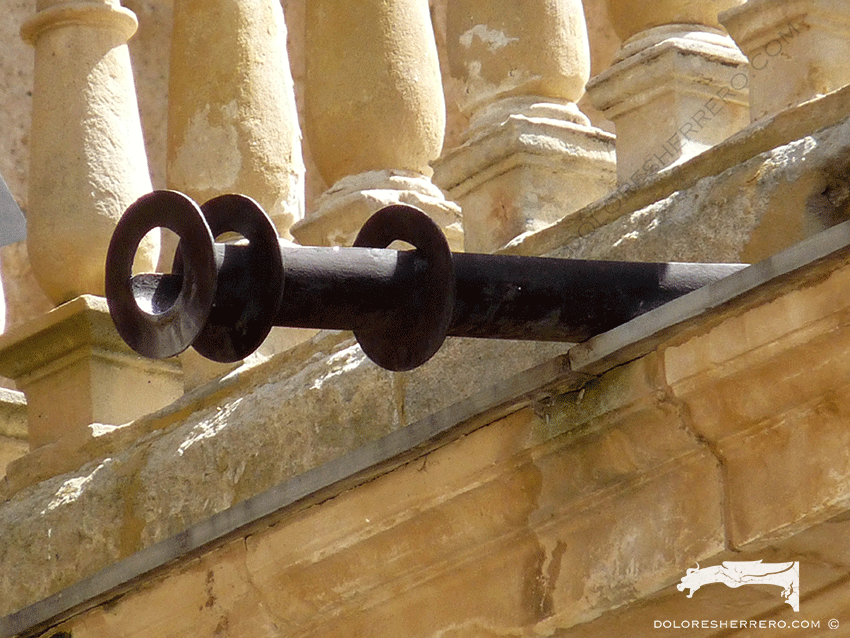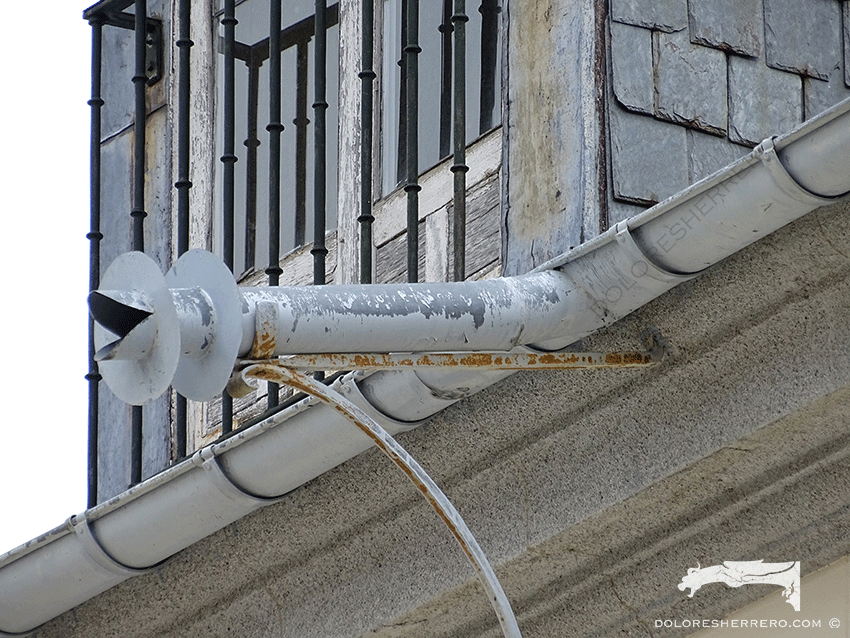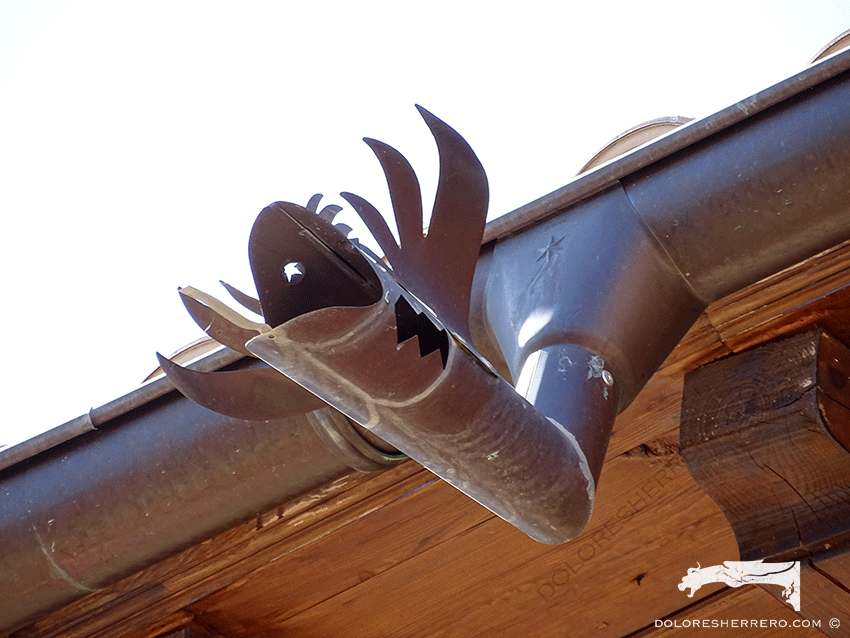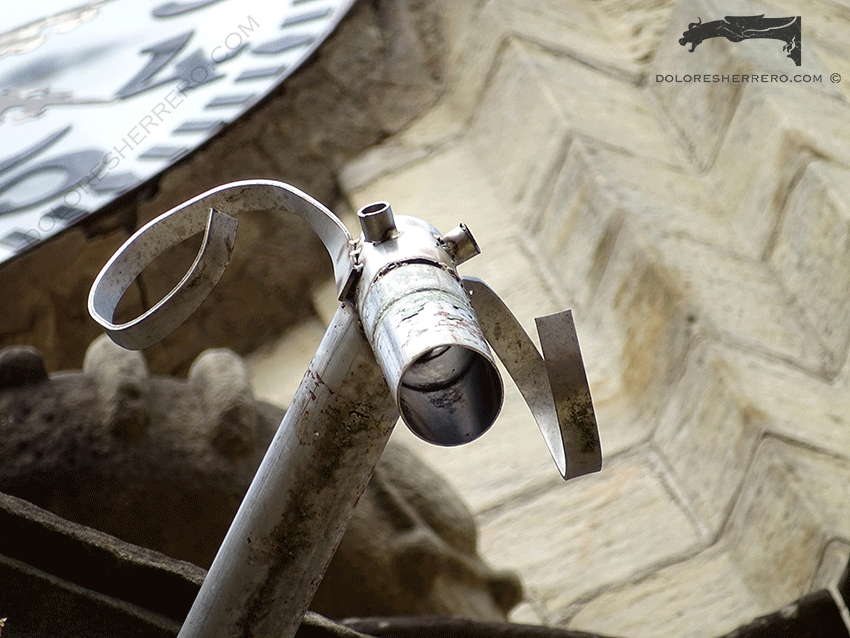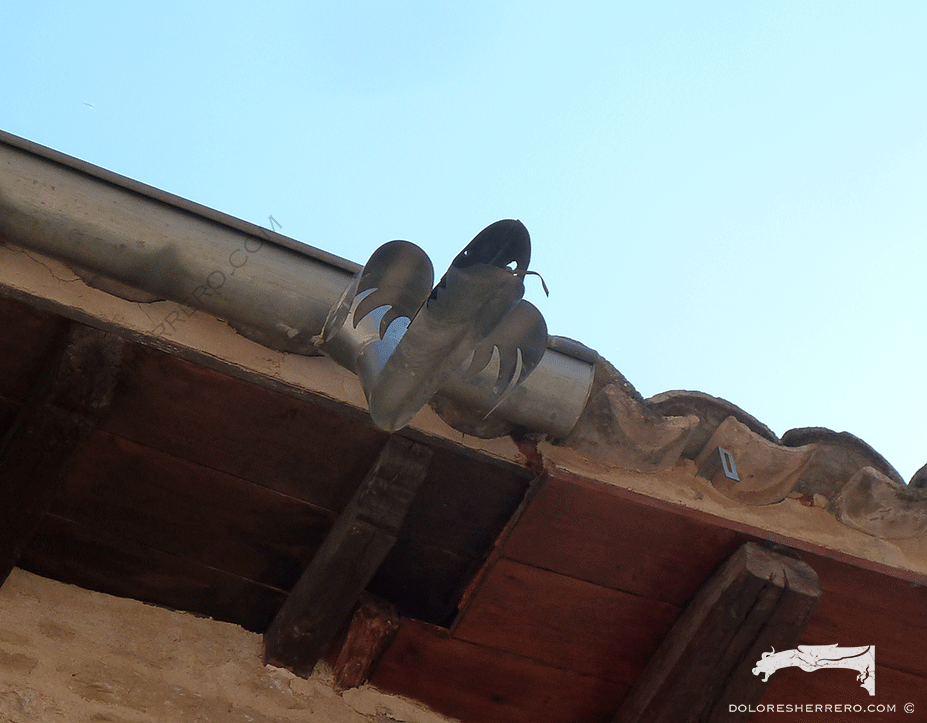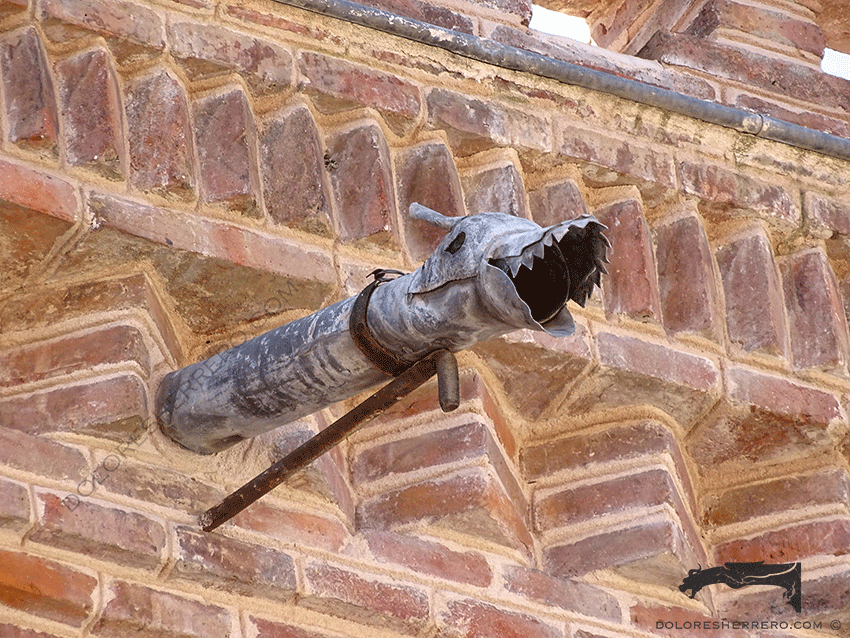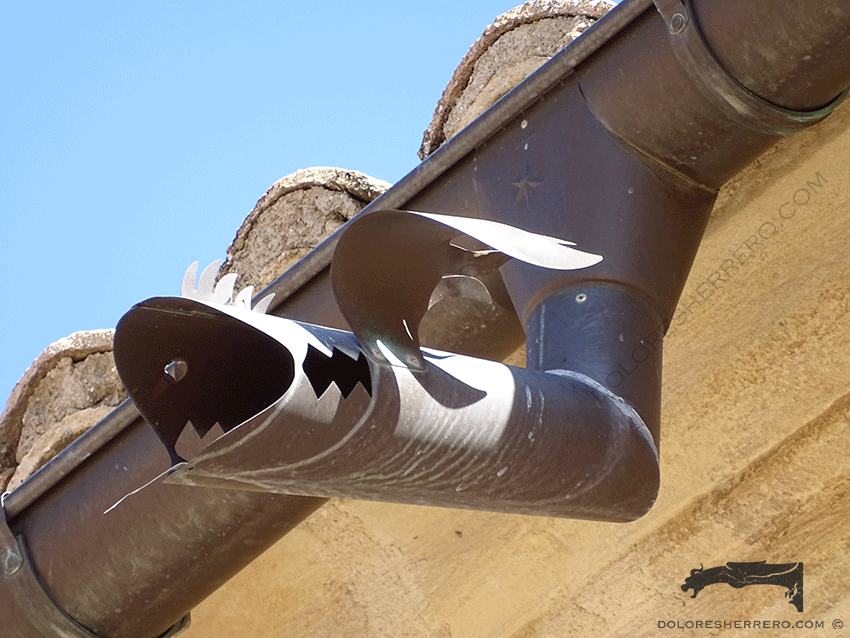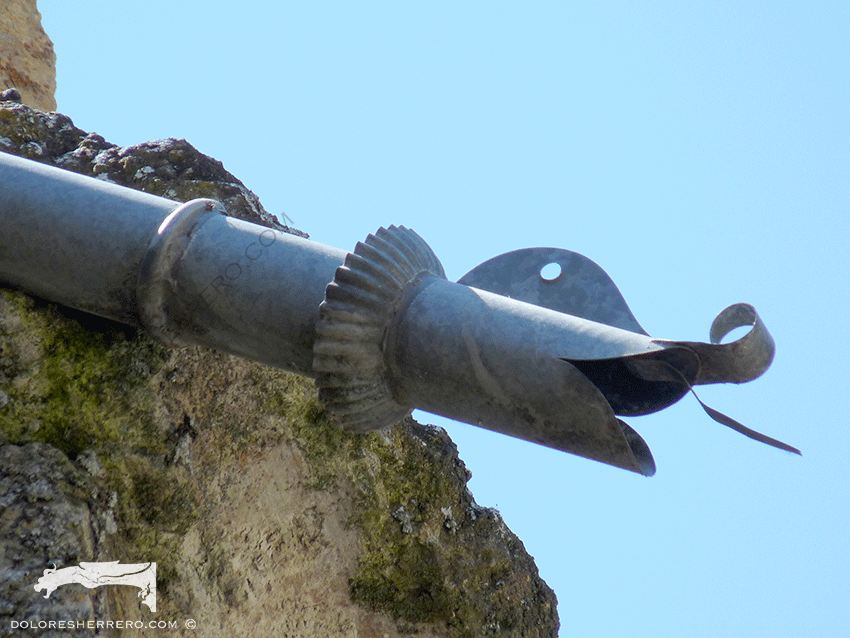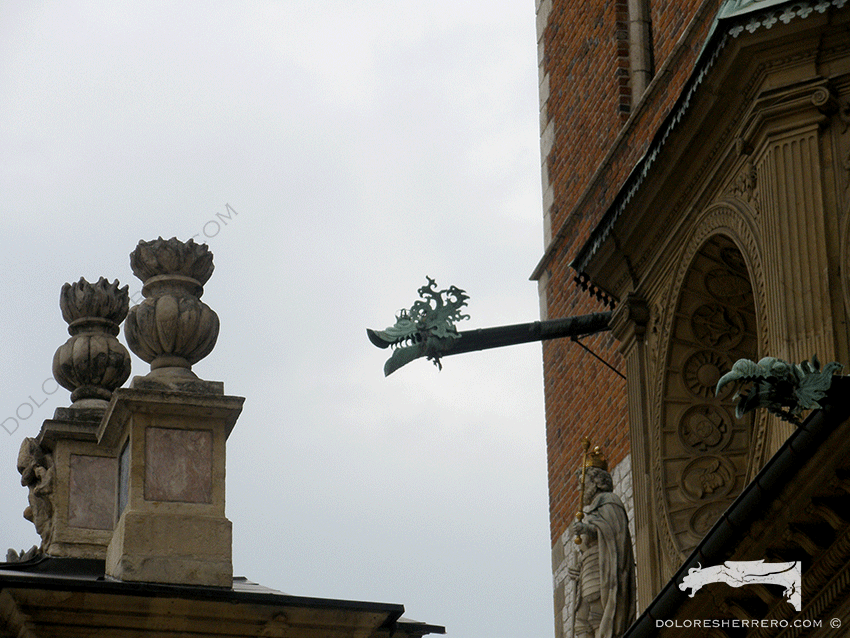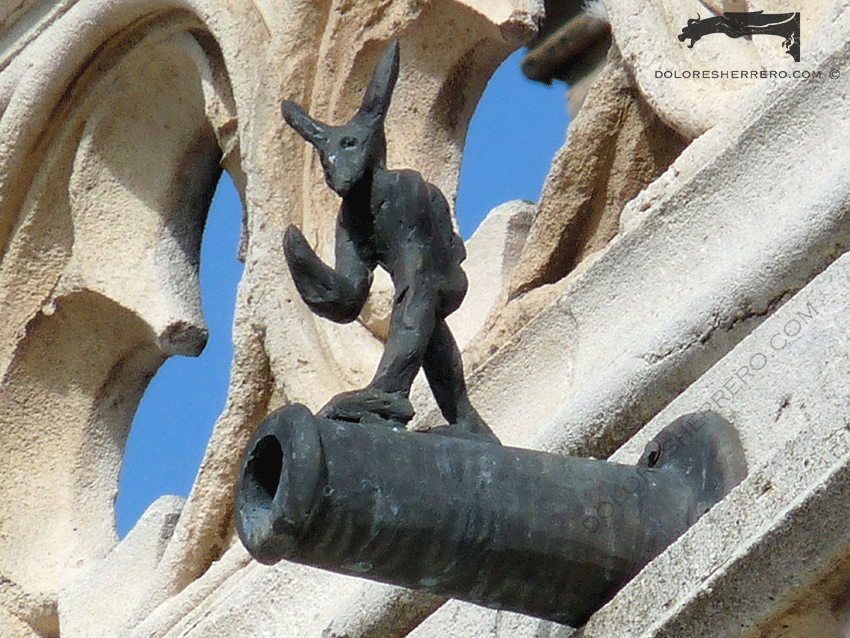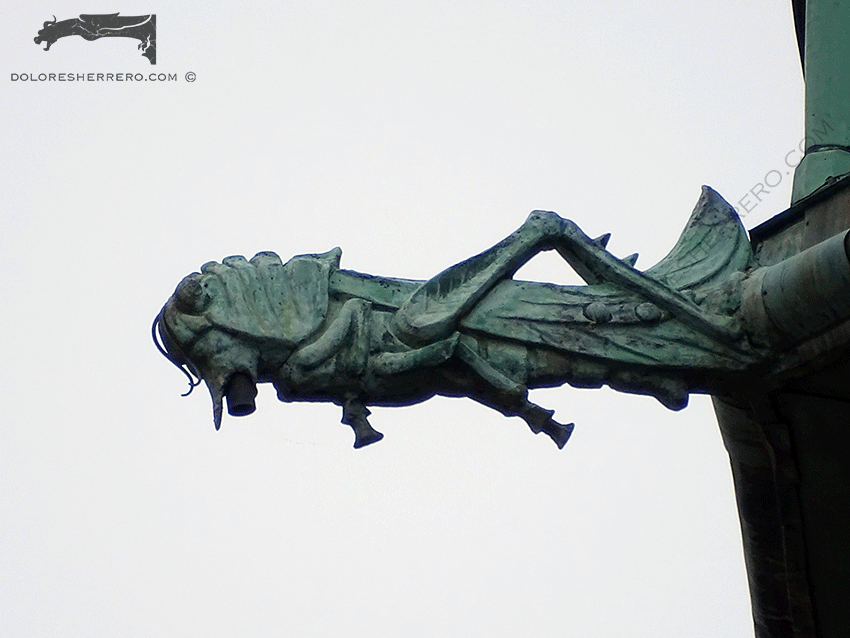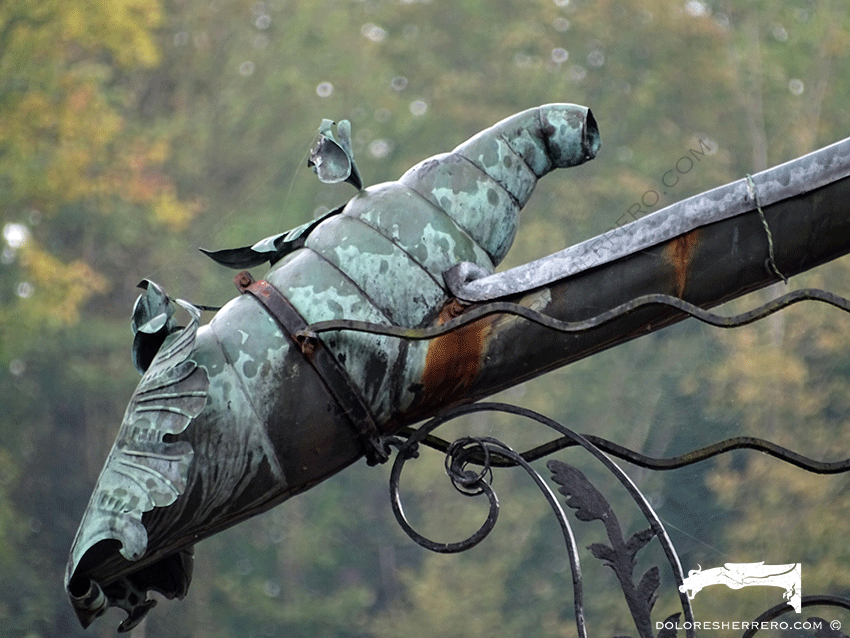Although stone is the most commonly used material for gargoyles owing to its durability, particularly in light of the many sources of deterioration (climatic, biological, chemical, human) to which the carvings are exposed, sometimes we find gargoyles that are made from other materials.
Unconventional Gargoyles: Exploring New Materials
Even though it is uncommon to find metal gargoyles, especially prior to the sixteenth century, there are a number of noteworthy examples. They are made from a variety of metals: the ones in the cloisters at the National Palace of Mafra in Portugal, for example, which consist of a pipe in the shape of a jug or pitcher with a “pouring spout”, are made of bronze.
- National Palace of Mafra
- National Palace of Mafra
There are gargoyles made from other metals or metallic materials, and some that are decorated with geometric elements (such as those at Kanei-ji Temple in Tokyo and Salamanca Cathedral). Others end in a mouth-shape, lending an animalistic air to the gargoyle (e.g. La Granja, La Fresneda), while some incorporate additional elements such as wings, crests or teeth (e.g. La Fresneda, Fuenterrabía, Valderrobres, Alcalá de Henares). In the town of La Fresneda (Teruel), on certain buildings (such as the Casa de la Encomienda, a stunning sixteenth-century palace) and on the exteriors of private houses, there are drainpipes whose ends are decorated to look like snakes or dragons. This lends ornamentation to these simple yet necessary items, and gives a touch of artistry to the otherwise functional openings of the drainpipes.
- Kanei-ji Temple (Tokyo, Japan). Photo by Manuel Custodio
- Hachiman Shrine in Taishidō (Tokyo, Japan). Photo by Manuel Custodio
- Kanei-ji Temple (Tokyo, Japan). Photo by Manuel Custodio
- Hachiman Shrine in Taishidō (Tokyo, Japan). Photo by Manuel Custodio
- Salamanca Cathedral (Spain)
- La Granja (Segovia, Spain)
- La Fresneda (Teruel, Spain)
- La Fresneda (Teruel, Spain)
- Church of Nuestra Señora del Manzano in Fuenterrabía (Spain)
- Valderrobres (Teruel, Spain)
- Alcalá de Henares (Madrid, Spain)
- Casa de la Encomienda in La Fresneda (Teruel, Spain)
Another example of this type of gargoyle, i.e. long pipes with heads at the end, can be found in the cloister of Ciudad Rodrigo Cathedral (Spain), where 20 gargoyles project from the gutter that runs around the perimeter of the cloister and from the sides of the buttresses. There are two that consist of a pipe or gutter with a screw-type design that resembles a snake. The opening looks like a snake’s mouth, while the upper section is decorated with a plant motif. The rest of the gargoyles comprise a pipe or gutter with two rings, a large ruff-like collar near the opening, a snake’s mouth with marked corners, a protruding tongue and two plates on the top of the head resembling eyes and a nose. These types of gargoyle range from the simplest, like these, to the most original and extravagant, such as the incredible dragon’s-head gargoyles that can be found in Krakow and Wroclaw (Poland).
- Ciudad Rodrigo Cathedral (Spain)
- Ciudad Rodrigo Cathedral (Spain)
- Krakow (Poland). Photo by Manuel Custodio
- Wroclaw (Poland). Photo by Manuel Custodio
At Palencia Cathedral (Spain) we can also find metal gargoyles shaped like miniature devils. They appear in various positions, always expressing movement: standing with one arm raised and the opposite leg extended in a walking pose; lying down with their arms and legs resting on the pipe; or sitting and lifting their arms upwards. They are uniquely dynamic and playful figures.
- Palencia Cathedral (Spain)
- Palencia Cathedral (Spain)
There is also a striking and highly original snake-shaped gargoyle on one of the buildings that adjoin Girona Cathedral (Spain).
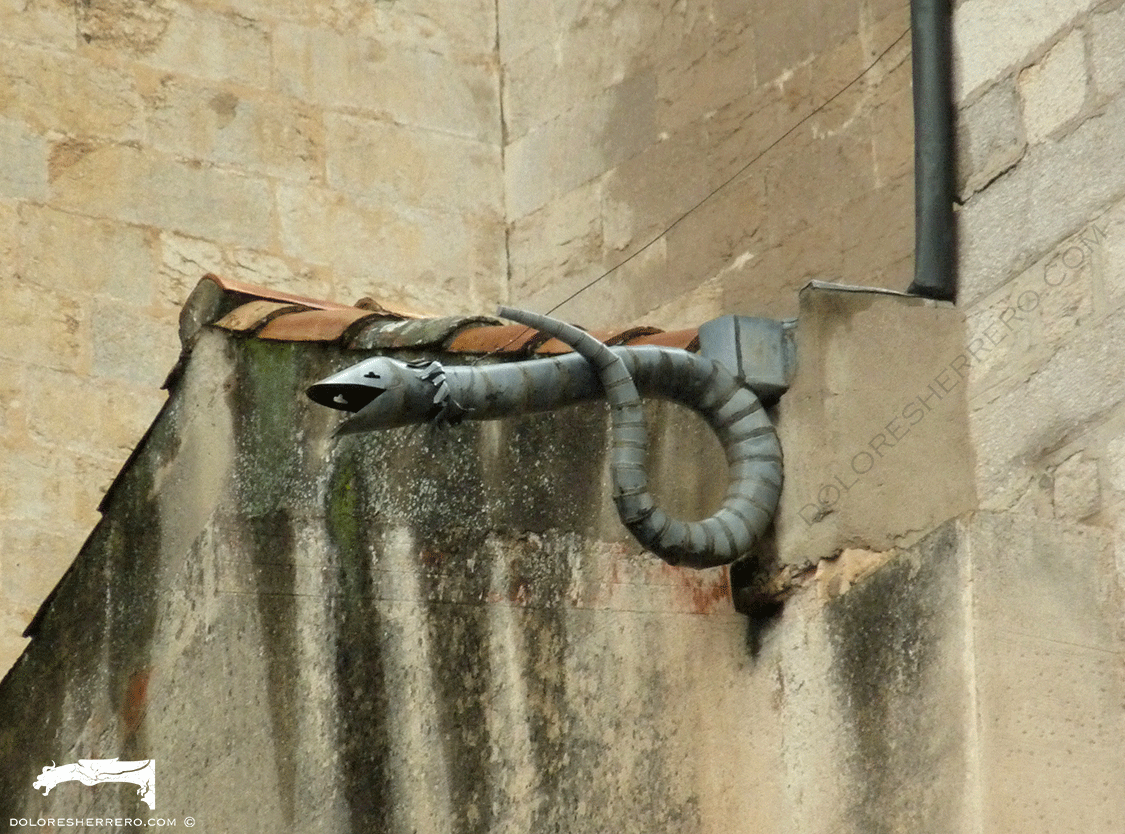
Girona Cathedral, Spain (annexe)
Lastly, we would like to highlight the gargoyles on two particular buildings. The first is Luxembourg Cathedral, on which we have already written a post. Beneath the octagonal balustrade of one of its three tall, slender pinnacles there are eight stunning metal gargoyles that boast an extraordinary iconography, particularly in view of the unusual animals they represent: a seahorse, a parrot, a grasshopper and another type of insect, a chameleon, a fish, a dog and a demon. The other building is the Foundation Scheibler Museum Rotes Haus in Monschau, Germany. Its striking and highly unusual metal gargoyles depict a kind of snail that also resembles a worm.
- Luxembourg Cathedral
- Luxembourg Cathedral
- Foundation Scheibler Museum Rotes Haus (Monschau, Germany)
- Foundation Scheibler Museum Rotes Haus (Monschau, Germany)
Wood is rarely used for gargoyles, as it is less durable. However, some examples can be found in certain parts of northern and central Europe (e.g. Germany, Switzerland and Scandinavia), where wood is commonly used as a building material. Likewise, we do not often find ceramic gargoyles, although they can be found on some Moorish buildings, in the form of pipes and decorated with enamel. Noteworthy examples include the gargoyles on the sixteenth-century Casa de las Veletas in Cáceres (Spain), which depict fantastical and brightly coloured creatures.
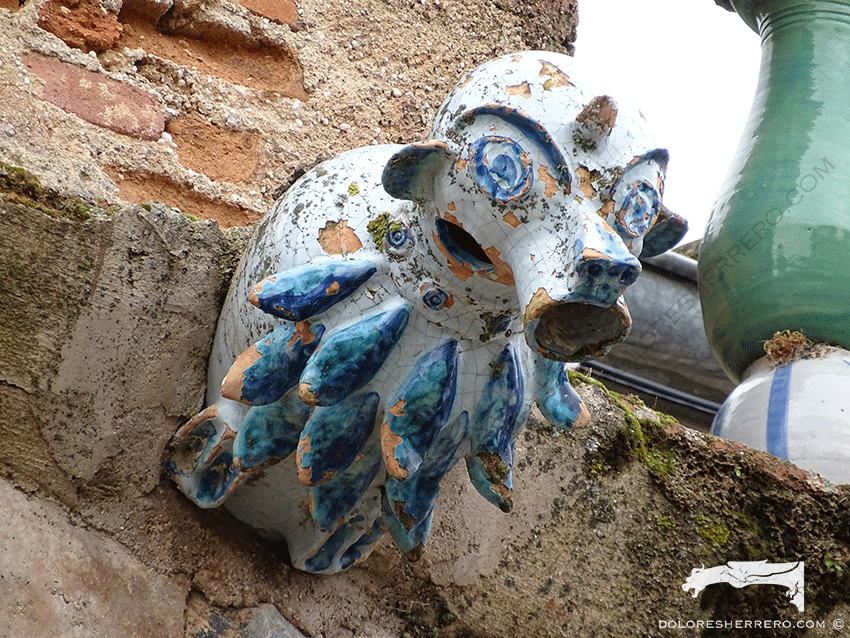
Casa de las Veletas (Cáceres, Spain)
Although they are not the stone carvings of fascinating and magnificent creatures we are accustomed to seeing on buildings, the examples we have just analysed are still gargoyles. Many of them are skilfully worked and extremely beautiful, such as those of Luxembourg Cathedral and the ones found in Poland, Monschau and Cáceres. Others, while simple and schematic, are highly original and incorporate ornamentations that beautify the drainpipes of the streets and squares in many of our towns and cities.
Bibliography consulted
MORALES BAENA, A. M., Las gárgolas del claustro del monasterio de San Juan de los Reyes de Toledo, Tesis inédita dirigida por M. Prieto Prieto, Departamento de Pintura-Restauración. Facultad de Bellas Artes. Universidad Complutense de Madrid, 1994 (leída en 1995).
VIOLLET-LE-DUC, M., Dictionnaire Raisonné de l´Architecture Française du XIe au XVIe Siècle par M. Viollet-le-Duc, Architecte du Gouvernement, Inspecteur-Général des Édifices Diocésains, Tome Sixième, Paris, F. de Nobele Libraire, 1967.

Doctor of Art History and researcher specializing in the study of gargoyles.
I am Dolores Herrero Ferrio, and my thesis, “An Approach to the Study of Gargoyles of Gothic Cathedrals in Castilla and León”, is dedicated to the study of these fascinating figures.
If you like gargoyles and art history, you will also enjoy my book, “The Gargoyle and Its Iconography,” a book I have written with great care for those interested in the world of gargoyles.
I have created my own Encyclopedia of Gargoyles, a Gargopedia to share with you, where you will discover all the secrets and wonders of these enigmatic sculptures.
I hope you enjoy this Gargopedia as much as I have enjoyed creating it, and remember that each gargoyle has a story to tell, and here you will discover them all.
